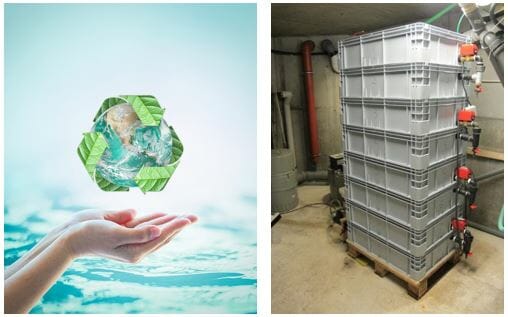Universitetsavisen
Nørregade 10
1165 København K
Tlf: 21 17 95 65 (man-fre kl. 9-15)
E-mail: uni-avis@adm.ku.dk
PhD thesis defense
PhD thesis defense — Bimala Prajapati at Landscape Architecture and Planning, IGN
Date & Time:
Place:
Auditorium Landscape, Department of Geosciences and Natural Resource Management, Rolighedsvej 23, 1958 Frederiksberg C
Hosted by:
Landscape Architecture and Planning
Cost:
Free
Bimala Prajapati defends her thesis,
Decentralized grey water reuse: Developing grey water treatment technology and mapping end-users’ perceptions
Supervisors:
Professor Marina Bergen Jensen, IGN
Associate Professor Niels O.G. Jørgensen, PLEN
Assessment Committee:
Professor Hans Jørgen Albrechtsen, DTU
Professor Ignasi Rodriguez-Roda, University of Girona
Associate Professor Lise Byskov Herslund, (chair), IGN
Abstract:
Sustainable water resource management through decentralized wastewater reuse can contribute to conserve global fresh water scarcity. Grey water (GW) is a potent domestic wastewater resource due to its reliability and availability in every household. Another reason is that it is less polluted than sewer wastewater. Though it is locally reused at households in many parts of the world, the quality of water should be ensured to maintain the hygiene, and to enhance reuse options. Most existing GW treatment technologies are not widely implemented due to various limitations.
This thesis aimed to develop a simple, low-cost, decentralized, household GW treatment technology that consistently can produce high-quality effluent. Since water reuse greatly depends on users’ perception, the thesis also studied this to determine the drivers and barriers behind GW reuse.
The proof of concept through a full-scale experiment demonstrates the possibility of designing a compact, cost and energy efficient technology. The backbone of the technology is its ability to passively aerate GW through gravity-driven flow in multiple treatment layers in a submerged system. Water quality analysis confirmed a significant improvement in effluent water quality. Bulk contaminants in GW, measured as turbidity, TSS and chemical oxygen demand (COD), were significantly removed to 95 %, 94 % and 87 % respectively. The success of passive aeration was measured as higher dissolved oxygen (DO) in effluent water than influent water. Nutrients were removed, but not as efficiently as removal of bulk contaminants. Microbiological contaminants were also significantly reduced but – as expected – not sufficiently for direct, high-level reuse. Hence, further investigation on how to lower the nutrients level is needed. In addition to this, when put in operation, a disinfection unit to remove the remaining pathogens from the effluent water is needed. The perception study, carried out in two cities, Kathmandu of Nepal and Copenhagen of Denmark revealed that GW reuse is perceived positively in both sites despite differences in demographic profile, current access to fresh water resources and GW reuse practices, with the main factors being water conservation and environmental protection. The study suggested that reservations about GW reuse can be minimized by providing a separate treatment unit at household level in Kathmandu and having regulatory approval from authorities in Copenhagen.
The thesis is available for inspection at the PhD administration office 04.1.413 at Øster Voldgade 10
